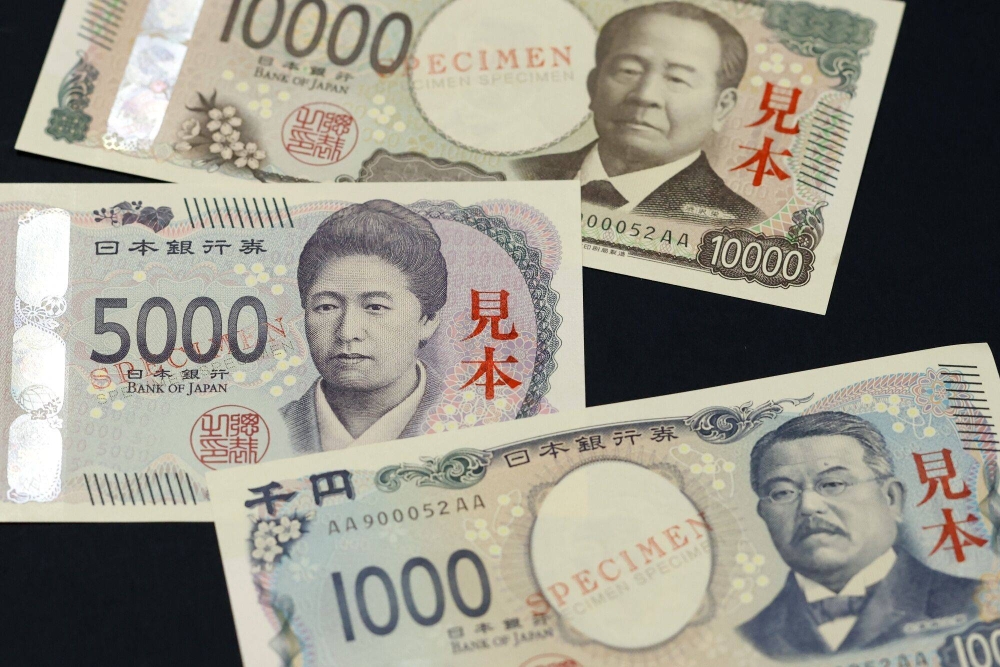
Japan has launched its first new banknotes in 20 years, featuring innovative three-dimensional portraits of prominent figures in financial and female education institutions. This initiative aims to enhance security and reduce counterfeiting.
The new banknotes employ printed patterns to generate holograms of the portraits facing different directions depending on the angle of view, using a technology that Japan’s National Printing Bureau claims is the world’s first for paper money. This technological advancement marks a significant step in Japan’s efforts to combat counterfeiting.
The new 10,000-yen note features Eiichi Shibusawa (1840-1931), the founder of Japan’s first bank and stock exchange, widely regarded as “the father of Japanese capitalism.” The 5,000-yen bill portrays Umeko Tsuda (1864-1929), an educator who founded one of Japan’s first women’s universities. The 1,000-yen bill features Shibasaburo Kitasato (1853-1931), a pioneering medical scientist.
| Denomination | Featured Person | Contribution |
|---|---|---|
| 10,000 yen | Eiichi Shibusawa | Founder of Japan’s first bank and stock exchange |
| 5,000 yen | Umeko Tsuda | Founder of one of Japan’s first women’s universities |
| 1,000 yen | Shibasaburo Kitasato | Pioneering medical scientist |
Though existing bills remain in use, various sectors, including train stations, parking lots, and ramen shops, are scrambling to upgrade payment machines. The government is simultaneously encouraging consumers and businesses to use less cash as part of its digitization efforts.
Kazuo Ueda, Governor of the Bank of Japan, emphasized the importance of cash in a Wednesday ceremony celebrating the new notes: “Cash is a secure means of payment that can be used by anyone, anywhere, and at any time, and it will continue to play a significant role even when alternative payment methods prevail.”
The central bank has been conducting experiments on digital currencies, but no decision has been made on issuing a digital yen. The push for cashless payments has gained momentum, with cashless transactions in Japan nearly tripling over the past decade to account for 39% of consumer spending in 2023. However, this still lags behind global peers, and the government aims to increase this share to 80% to improve productivity.
Roughly 90% of bank ATMs, train ticket machines, and retail cash registers are prepared to accept the new bills. However, only half of restaurant and parking ticket machines are ready, according to the Japan Vending Machine Manufacturers Association. Additionally, nearly 80% of the 2.2 million drink vending machines nationwide still need upgrades.
Takemori Kawanami, an executive at ticket machine company Elcom, highlighted the challenges: “It might take until year-end to respond to this. That’s too slow, but we are short of components,” he added, noting that client orders for upgrades exceeded expectations.
- Japan introduces new banknotes with advanced anti-counterfeiting technology.
- New bills feature prominent figures in finance and education.
- Businesses are scrambling to upgrade payment machines.
- Government pushes for increased cashless payments.
- Upgrading vending and ticket machines poses significant challenges.
Many Japanese fast-food restaurants, such as ramen shops and beef bowl stores, rely on ticket machines to cut labor costs. However, some small business owners facing inflation are unhappy with the additional investment required for the new bills.
Shintaro Sekiguchi, who spent about 600,000 yen on ticket machines for three ramen shops in southern Tokyo, expressed his concerns: “The machine replacement has no sales impact, so it’s only negative for us, on top of rising costs of labor and ingredients.”
Sekiguchi also mentioned the growing trend of cashless payments: “As cashless payments grow, I wanted a cutting-edge machine that could offer clients various payment options. But I could only afford cash-only equipment. Our ramen doesn’t have high unit prices, so running the shop for a day or two would hardly pay for the replacement,” he added.
The introduction of new banknotes marks a significant development in Japan’s monetary system, reflecting the country’s ongoing efforts to balance traditional and modern payment methods. While the new notes enhance security and honor historical figures, the push towards cashless transactions continues to shape the future of payments in Japan.
With the government advocating for increased digitization and the Bank of Japan exploring digital currencies, the landscape of financial transactions in Japan is poised for transformation. Businesses and consumers alike will need to adapt to these changes as the country navigates the evolving world of currency and payments.
Featured Image courtesy of The Japan Times
